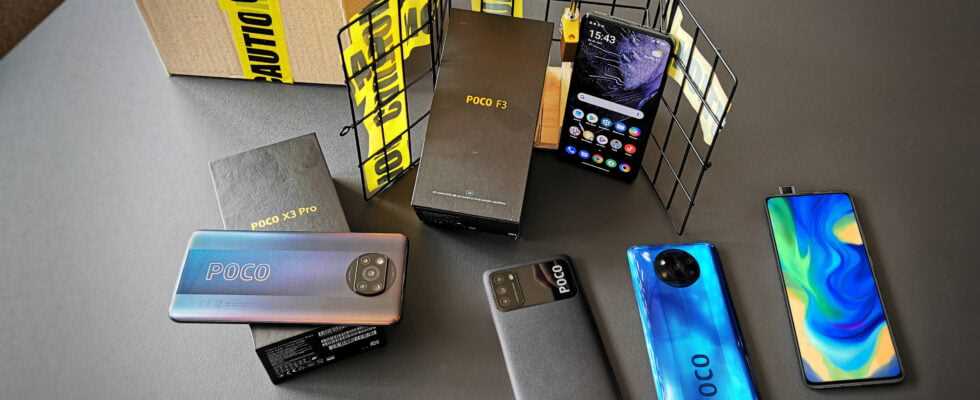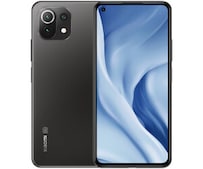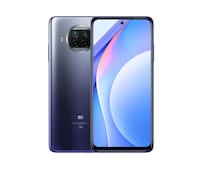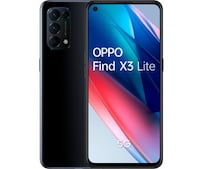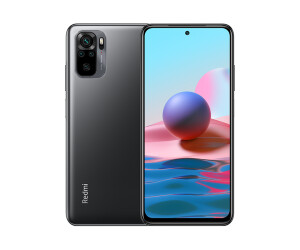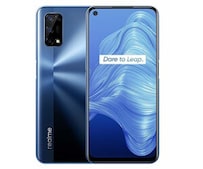Poco is now much more than Xiaomi’s “cheap brand” and, like Redmi, a sub-brand of Xiaomi created for marketing. The roots go back to the Pocophone F1, which failed the equally expensive competition in the benchmarks thanks to its top processor. In the meantime, there is a broader range in terms of price and device class. Xiaomi leaves the top class to the more expensive Xiaomi Mi 11 models, but in the middle class there are overlaps with Xiaomi’s Redmi Note 10 series or the new Redmi Note 11 or Redmi Note 11 Pro 5G models, which offer better displays. At the market leader Samsung, you will look in vain for Poco performance values in the same price range. The current Poco family includes six models with Poco M3, Poco M3 Pro 5G, Poco M4 Pro 5G, Poco X3 NFC, Poco X3 Pro and Poco F3. The top model Poco F2 Pro is a bit older. COMPUTER BILD shows the differences. Clicking on the device name takes you to the test.
Poco M3
The Poco M3 is inexpensive, but also the weakest performing Poco with the Tempo mark 3.8. It can still be used reasonably in everyday use, but complex 3D games push the processor to its limits. It is incomprehensible and a pity that Xiaomi saves the NFC chip. On the other hand, no savings were made with the powerful battery, which brings it to an impressive 6,000 milliampere hours (mAh). With a Running time of 13:20 hours with intensive use, the Poco M3 is one of the absolute endurance artists in the COMPUTER BILD cell phone battery test. the 6.53 inch LC screen is sharp with 2340×1080 pixels, but still bright for LCD ratios (1655:1) (483 cd/m²). The camera is quite good in daylight and the Photo quality gets an overall rating of 2.6.
Poco M3 Pro 5G
The Poco M3 Pro 5G differs significantly from the Poco M3 and comes with a 6.5 inch large LCDwho tested it on 520 cd/m² brought. It looks classier with its smooth back and looks more like its more expensive siblings. At 5,000 milliampere hours (mAh), the battery is 1,000 mAh smaller than the endurance wonder Poco M3 and came up with one in the test Running time of 10:24 hours. In addition to the fast 5G mobile communications standard, there is also NFC for contactless payment via Google Pay. The Pro has a different chipset and is faster (Tempo note: 2.6). While the M3 only scored 315/1404 points (single-core/multi-core) in Geekbench 5, the Pro still achieved 561/1757. There are no significant differences in the camera equipment. the Photo quality gets an overall rating of 2.5.
Poco M4 Pro 5G
The Poco M4 Pro 5G has a slightly larger display than the M3 Pro 5G (6.6 instead of 6.5 inches), a faster processor (Tempo note: 2.5), a different camera with a resolution of 50 megapixels and an ultra-wide-angle lens instead of a macro and depth sensor. In addition, the selfie camera has a higher resolution. the Photo quality gets an overall rating of 2.5. The battery is the same size, but can be charged faster with 33 watts: In the test, it was fully charged in 1:14 hours, almost twice as fast as the M3 Pro 5G (2:31 hours). The endurance is also great: the M4 Pro achieved a very good level Running time of 12:39 hours. In addition to the fast 5G mobile communications standard, NFC is also on board.
Poco X3 NFC
The Poco X3 NFC plays in a higher class in terms of performance (Tempo mark: 2.2) and comes with reasonable equipment in its price range. It goes without saying that you shouldn’t expect a top processor or OLED screen here. the 6.67 inch LC screen is sharp with 2400×1080 pixels and still quite bright (663 cd/m²), but not particularly rich in contrast (1202:1). The Poco X3 comes at one Running time of 9:39 hours and with a comprehensive camera equipment with the Overall score 2.2 for the photo quality.
Poco X3 Pro
The Poco X3 Pro is basically a Poco X3 NFC with chip tuning. The faster processor ensures higher performance (Tempo mark: 1.9) and now provides the gaming skills that the normal X3 should already offer. But we would expect 5G and a crisp OLED from a real “Pro”. the 6.67 inch LC screen is sharp with 2400×1080 pixels, but not particularly bright (552 cd/m²) still particularly rich in contrast (1506:1). But the battery brings it to one Running time of 10:20 hours. In the lab, the Poco X3 NFC camera performed better. the Photo quality of the Poco X3 Pro gets an overall rating of 2.3.
Poco F3
The Poco F3 makes a slim, serious impression. The front and back are covered with Gorilla Glass 5, the Poco lettering is unusually subtle. the 6.67 inch OLED screen is sharp with 2400×1080 pixels and convinces with a high contrast and 120 Hertz screen change frequency, which not even the Poco F2 Pro offers. In addition, the display is equipped with (925 cd/m²) quite bright. The Snapdragon 870 ensures strong performance (Tempo mark: 1.4), almost on par with the F2 Pro. Only the top models with the Snapdragon 888 such as the Xiaomi Mi 11, Xiaomi Mi 11 Ultra, OnePlus 9, OnePlus 9 Pro or Samsung’s Galaxy S21 Ultra are a bit faster, but also a lot more expensive. The Poco F3 comes at one Running time of 10:08 hours and scores with a comprehensive camera equipment with the Overall score 2.1 for the photo quality. 5G is on board and ultimately the Poco F3 even overtakes the F2 Pro with a test score of 1.7. What’s more: It’s in the top 20 for the best Android phones. There’s simply no cheaper smartphone with a better test score at the moment! The Poco F3 is an absolute buy tip and almost unrivaled in its price range. The price tip from Samsung, the Galaxy S20 FE 5G is around 75 percent more expensive than the Poco F3 with a worse test score!
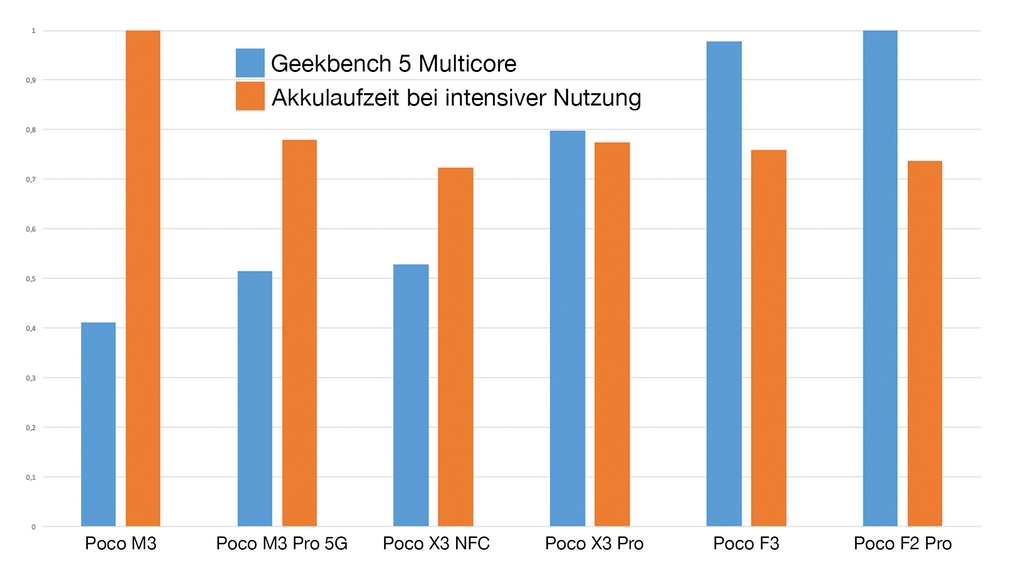
Comparison of speed (example Geekbench 5 Multicore) and battery life with intensive use according to the COMPUTER BILD usage profile. Best is scaled to 1 in each case. The differences in speed are greater than in battery life.
Poco F2 Pro
When processing, Tempo (Tempo mark: 1.3) and internet speed cuts that Poco F2 Pro just as good or better than some flagships. It costs “only” around 400 euros. the 6.67 inch OLED screen is sharp with 2400×1080 pixels, very rich in contrast and really bright (1127 cd/m²). The battery achieved one in the tough test Running time of 9:50 hours. In the camera test, there were conflicting results: the main camera is great under normal conditions, expensive top-end androids are better for zoom shots. the Photo quality of the Poco F2 Pro gets an overall rating of 2.2. As befits a “Pro”, 5G is on board. A special feature is the extendable front camera, which allows the F2 Pro to do without a hole in the display. In the meantime, the F2 Pro has been undercut by the high-flyer F3 in terms of both the test score and the price and is more of a discontinued model that is no longer directly listed by Poco.
